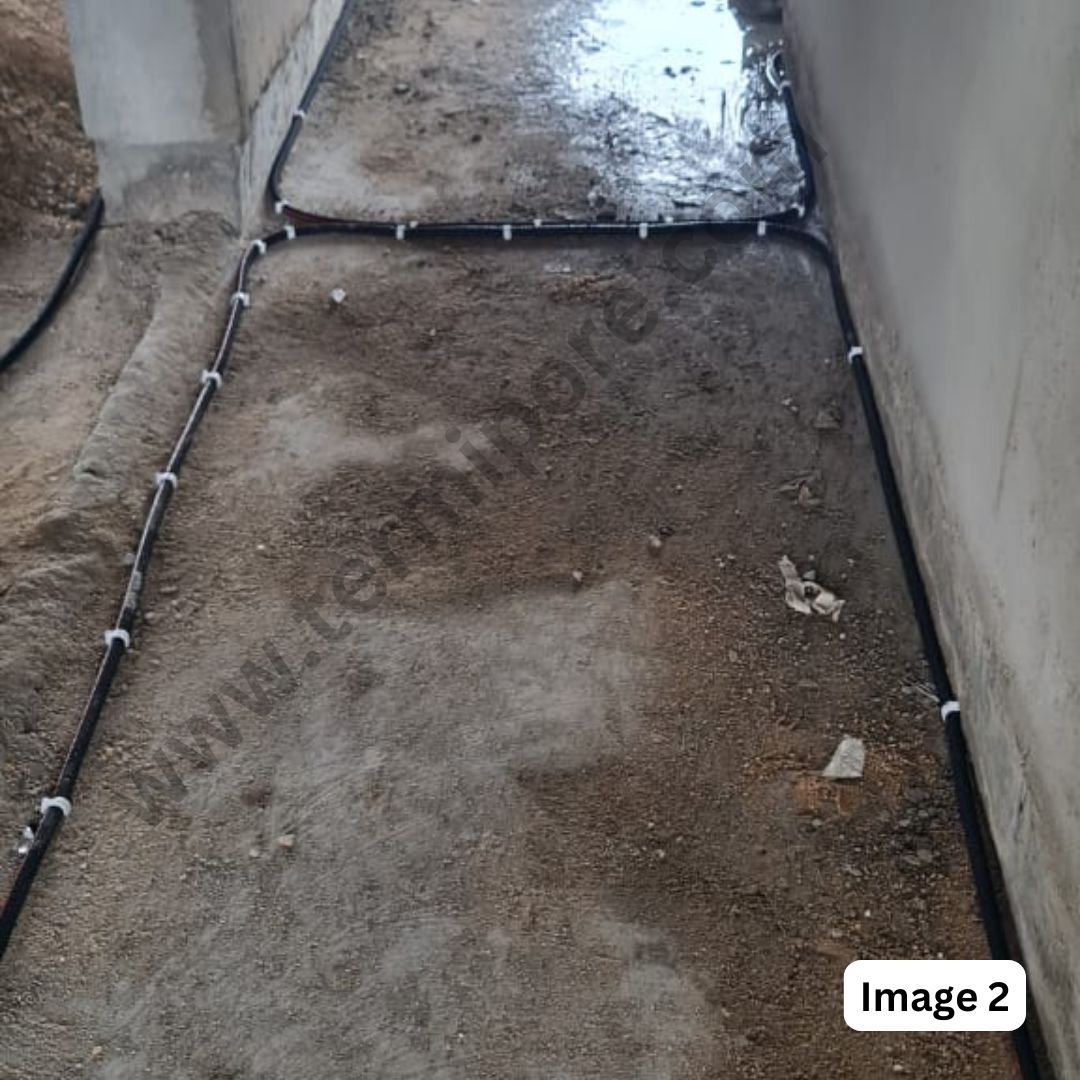Termipore Installation: Is it Better at Plinth Level or After PCC?
When it comes to termite protection, proper installation timing is crucial for long-lasting results. One of the common questions that we are often asked is: When to install Termipore; at Plinth Level or after Plain Cement Concrete (PCC) has been laid?
Read on for a quick overview.
Each stage in the construction
process offers benefits for termite treatment, and understanding those benefits
will give an insight into when to schedule TermiPore installation, so as to achieve
maximum effectiveness.
Understanding the Key Stages
in Construction
Before diving into the specifics
of Termipore installation, it is important to have a basic understanding of the
key stages involved in the foundation of a building:
1. Plinth Level: This is
the stage where the foundation is being prepared and the structure is ready to
rise above ground. The plinth is the part of the building just above the ground
level and typically marks the transition from underground construction to
above-ground structure.
2. PCC Stage: Plain Cement
Concrete, or PCC, refers to the layer of concrete that is poured before
reinforcing bars (rebars) are laid for the main structural slab. PCC acts as a
base layer, providing a smooth surface for construction and serving as a
protective layer against soil contamination or moisture.
Both the plinth and PCC stages
are critical junctures in the construction process, and each offers unique
opportunities for applying termite protection measures.
Termipore Installation at
Plinth Level: (as seen in pic 1)
Applying Termipore treatment at
plinth level in conjunction with Soil Treatment offers several benefits,
especially when it comes to prevention. Here’s why:
1. Maximum Ground Coverage:
Since the site is totally vacant and exposed at plinth stage, you will be able
to install a systematic grid all across the site, enabling you to create a
comprehensive barrier at foundation level, allowing termite treatment to be
applied directly to the soil around and beneath the structure. This creates a
comprehensive barrier, ensuring that termites cannot enter the building from
the ground. Once construction is done above foundation, you have no way to
fortify your property periodically at that level, unless you have installed a
sturdy and reliable anti-termite reticulation system like TermiPore. With
TermiPore, you can easily inject termiticide at required intervals, and ensure
that termites never enter your premises from beneath the ground. As you are
aware, termites can make way through the tiniest of cracks and the destruction
is visible on the surface only after irreparable damage is already done!
2. Prevention from Day One:
Since the plinth is the transition point between the underground foundation and
the above-ground structure, protecting at this stage ensures that termites are
prevented from accessing the building through any possible entry points from
the very beginning.
3. Permanent Shield: The
application at this stage integrates termite protection into the foundation of
the building itself, making it a permanent shield that provides long-term
protection. Construction can spring up around your property at any time and you
will never know, when termites from neighbouring lands/properties start making
inroads into your property. TermiPore gives you the best framework to ensure
termiticide injection at regular intervals, to ensure that there is no
infestation on your property due to the negligence of your adjoining property
owners.
Termipore Installation After
PCC (as seen in pic 2)
While the plinth level offers
certain advantages, some recommend installing TermiPore Anti-Termite
Reticulation System, after the PCC stage. Here's why this approach can be
beneficial:
1. Barrier Over the Concrete
Base: Once the PCC is laid, treating the area ensures that termites are
unable to penetrate through the concrete base into the structure. This is
especially important for protecting the flooring and walls, which are often at
risk of termite attack if not properly sealed.
2. Added Layer of Protection:
By treating after PCC, you are essentially adding an additional layer of
termite defence. Any gaps, cracks, or vulnerabilities that might develop during
the concrete pouring process are sealed off by the termite treatment.
3. Concentrated Protection for
Vulnerable Areas: While the plinth level is important for creating a broad
barrier, applying the treatment post-PCC allows for targeted application in
areas that might be more prone to termite infiltration, such as the joints,
edges, and perimeters.
Which is the Better Option?
The question of whether Termipore
should be applied at the plinth level or after PCC doesn't necessarily have a
one-size-fits-all answer. Both stages offer critical opportunities to fortify a
structure against termites. However, the most effective approach is often a
combination of the two:
1. First Installation at Plinth
Level: This creates a wide-ranging barrier in the soil and around the
foundation, ensuring termites are stopped at the source.
2. Second Installation After PCC:
This adds a targeted layer of protection, focusing on any weaknesses that may
arise during construction and offering reinforcement at key vulnerable areas.
By treating both at the plinth
level and after PCC, you are essentially doubling down on protection, ensuring
that your building is safeguarded from termites on multiple levels.
Conclusion
When it comes to termite
protection, timing is everything. Installing Termipore at plinth level provides
early-stage protection that lays the foundation for a termite-free structure.
Applying it again after PCC further reinforces this defence, ensuring that any
potential vulnerabilities are sealed off.
For best results, it's recommended to integrate both
approaches into your termite prevention strategy. This way, you can be rest
assured that your structure is fully protected from ground up. For more
details, click here: https://termipore.blogspot.com/2023/10/at-what-stage-of-construction-can-we.html
Contact us at: +91 6359292525 / 8401017087 / marketing@termipore.com





Comments
Post a Comment